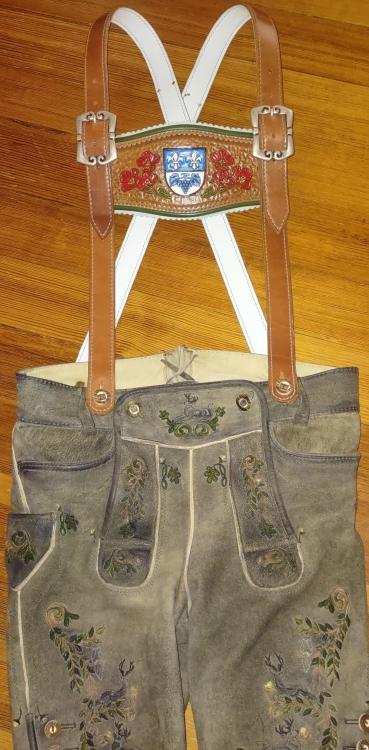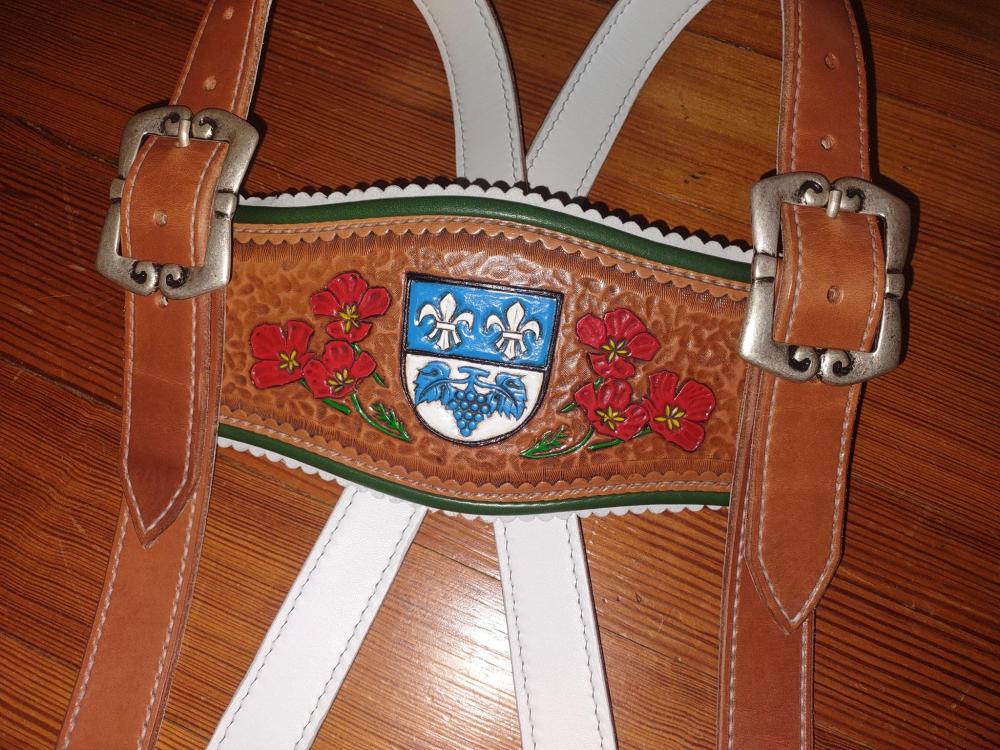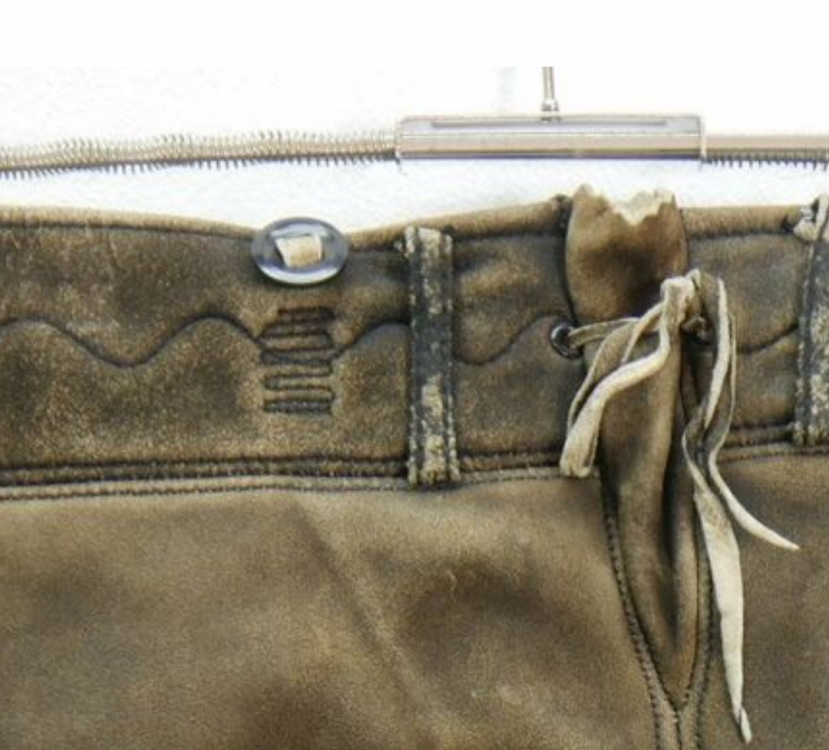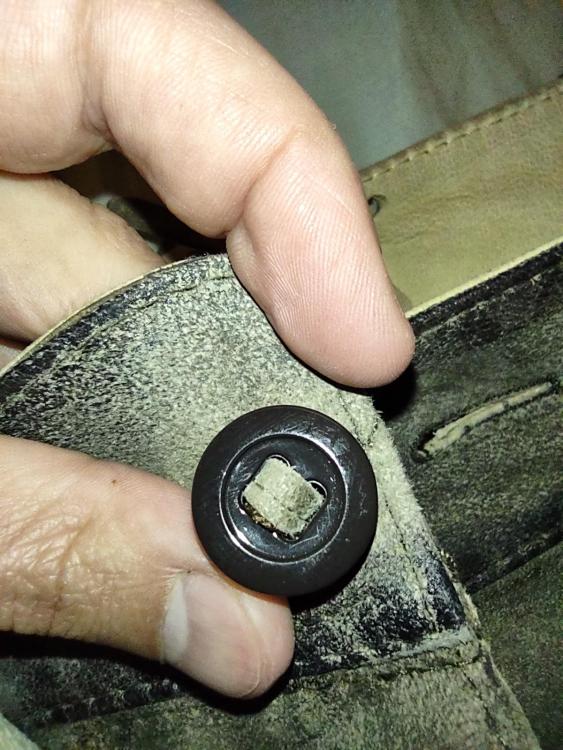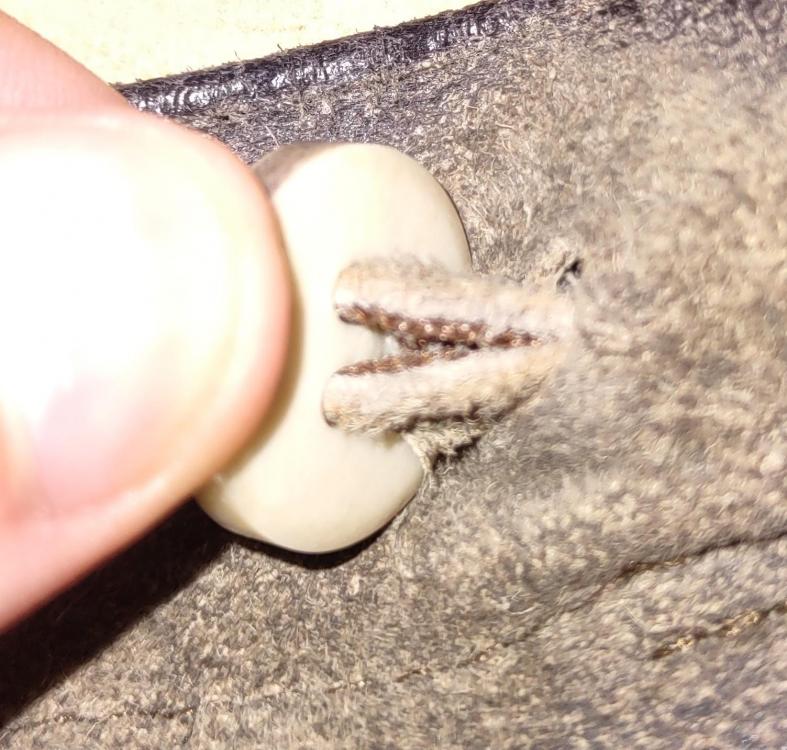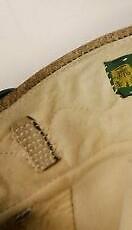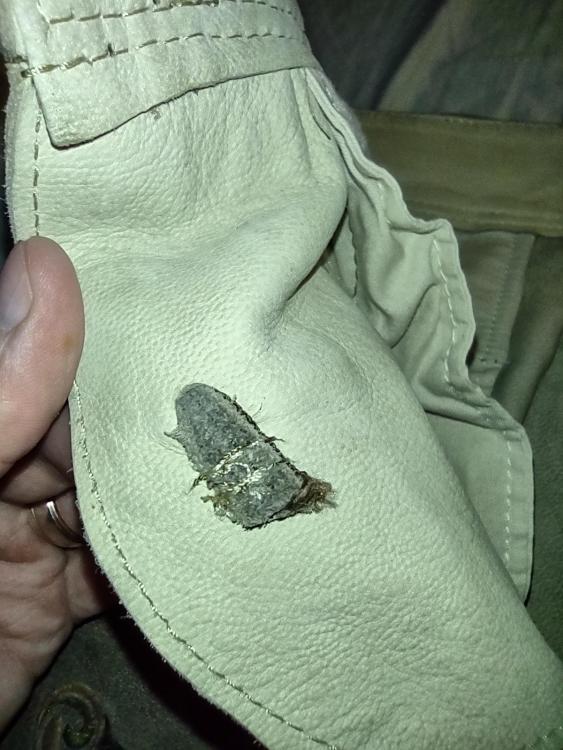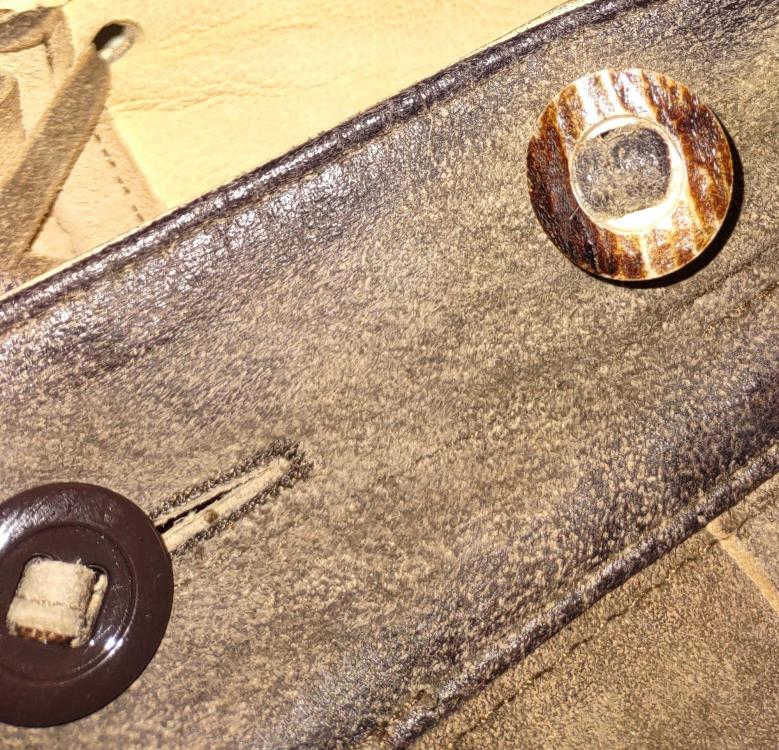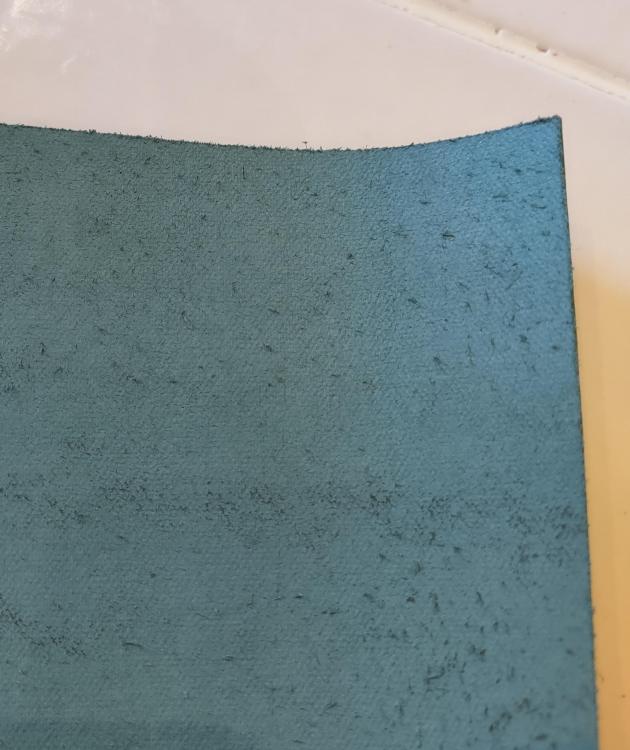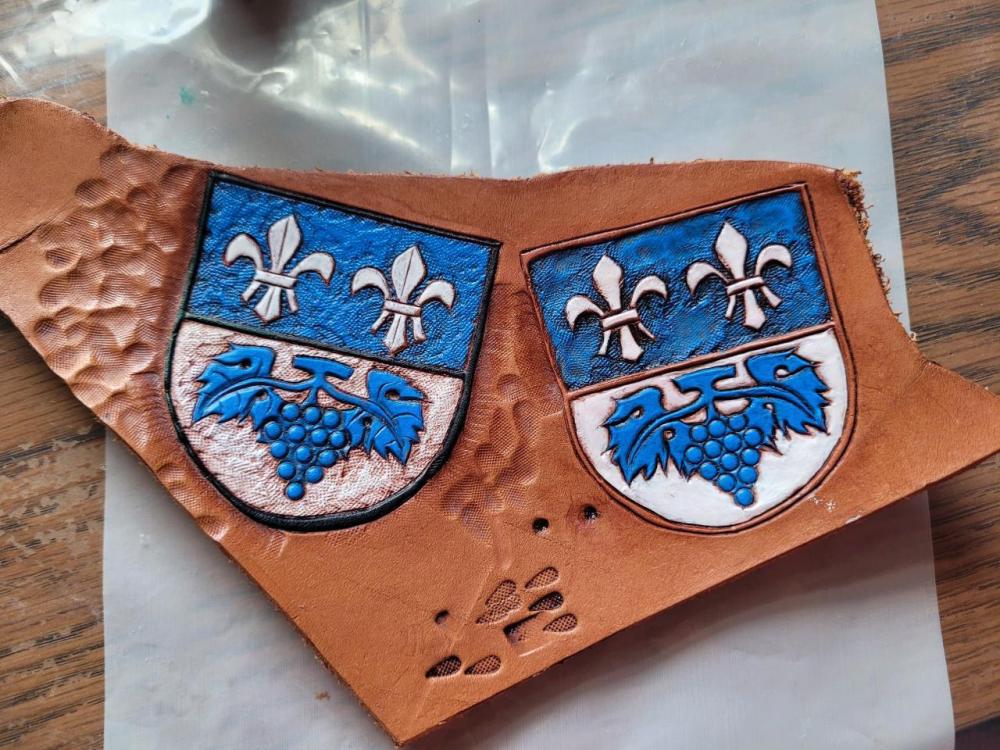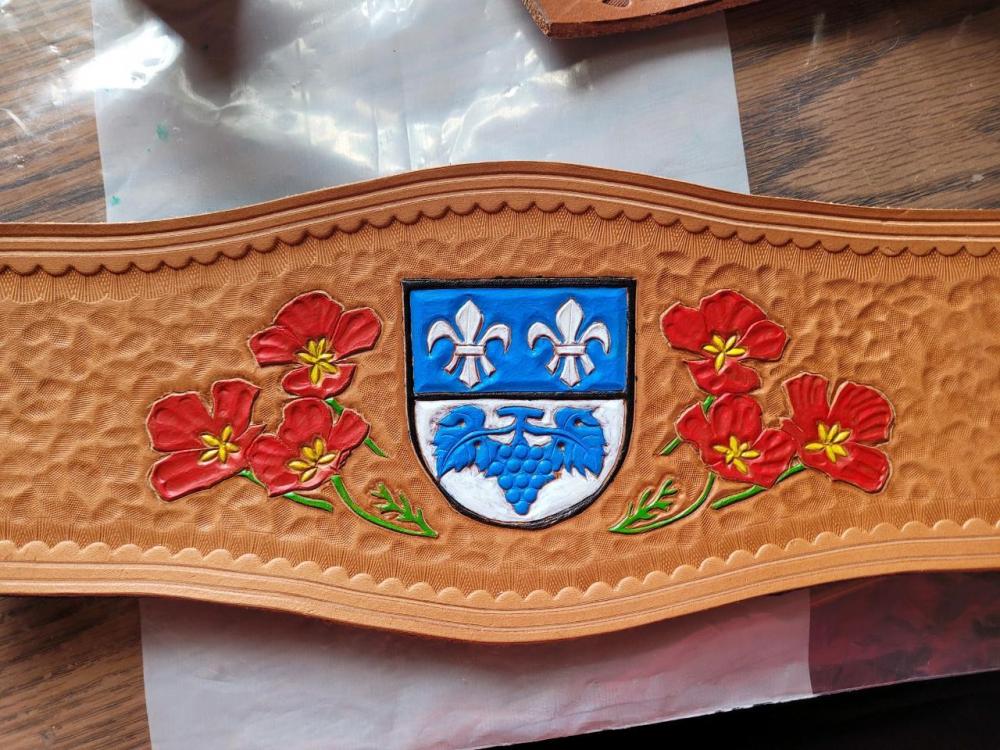
hanzosbm
Members-
Posts
28 -
Joined
-
Last visited
Recent Profile Visitors
The recent visitors block is disabled and is not being shown to other users.
hanzosbm's Achievements

Member (2/4)
-
Thank you all
-
Thank you very much. And yes, for all intents and purposes, this is my first project. (I made a simple belt pouch ~23 years ago, but that was it) Of course, as soon as I showed my 3 year old the completed set, he immediately said he wants some like Daddy's. We'll see what happens. Thank you. And yes, the German club I belong to has our Oktoberfest this weekend, hence my timetable to complete them. I'm really looking forward to showing them off.
-
I think I probably spent twice as much on tools as it would've cost to just have someone make them, but it was a fun introduction into leather working. Who knows, after a bit of a break, maybe I'll try a second project. Hermann Oak ~9oz with a white lambskin liner. The green piping was buffalo calf I bought pre-dyed and the buckles and buttons to attach them were ordered. Closer look at the chest piece
-
Well, I wouldn't say it's so much a phobia as an apprehension. You make a good point about trying it first. I'm really not worried about being able to perform the stitches, it's more about not knowing which needles to buy, and not knowing if it'll punch through the leather. But, I suppose if I just stack up 4 pieces of scrap leather and try it out, I'll find out pretty quick. I just have to act fast. Time has gotten away from me and I need the buttons added and the back straps of the suspenders finished in 3 weeks. Plenty of time if things go smoothly; cutting it close if I have to pivot. As a back up, I found an old pre-1930 sewing machine that the previous owners of our home left behind (never realized it was inside of the table we've been using for years). I found a downloadable instruction manual, but it is FAR from straight forward (for me) and it might take some heroics just to get it running.
-
Hi Klara, In retrospect, I should have numbered the pictures to be able to refer to them easier. The second picture of the first post, and the first picture of the second post are not MY Lederhose, but rather a pair I found online to try to show how the buttons are often attached. The rest are mine, but, for good or bad, the manufacturer did a REALLY nice job of hiding the stitching so it's hard to see. I agree that a curved needle likely isn't necessary, I just have no experience with hand sewing besides saddle stitching. From what I have learned, the typical method is to take a thin thong of leather approximately 2-3 inches long and sew a ribbon/backing along the length of it. That piece is then passed through the button. A small hole/slit is then made in the waistband of the Lederhose (all the way through) and the tails of the thong are fed through the front and come out the inside. Those tails are then sewn down to the waistband (usually all the way through). I also found a video online where the tails were sewn down around the circumference of the tails rather than back and forth across it. Either way, I'm looking at trying to sew through two layers of the waistband, the two layers of the thong tails, and the ribbon backing them. I don't have any experience with hand sewing in this regard, so I'm not sure how difficult it would be or what gauge glovers needle I'd need, etc.
-
Thank you, Fredk. I've only ever done saddle stitching after pre-punching the holes with a diamond chisel. I don't think that would work in this case. Is there a different kind of needle/method I should use?
-
Any suggestions on this kind of sewing without a sewing machine? Is it possible, or do I need to take it somewhere to have it done?
-
Doesn't appear to be
-
Quick bit of information for those unfamiliar: The typical Lederhosen most people are used to have suspenders to hold them up which attach via 4 buttons. In recent years, the fashion trend has been to forego the suspenders in favor of a belt. Normally, this would be fine, but some manufacturers have used this trend as an excuse to leave the buttons off. Being an American, I had to buy my recent pair online, and didn't realize it was missing the buttons till they arrived, and now I need to add them. I've already sourced the buttons, now it's a matter of adding them. The way they are attached (as shown in the pictures) is with a strip of leather passing through the button, then that strip is passed through the waistband via a small hole and then sewn down. As the leather is traditionally chamois tanned deerskin (mine is chrome tanned goat, but similar properties) it stretches a bit, so a very narrow backing ribbon is seen onto the back/inside of the leather strip. So, I know how it's constructed, so what's the problem? I don't own a sewing machine. I'm used to saddle stitching veg tanned, but this is very different. How do I go about doing this? Should I take it somewhere to be done? If so, would a tailor be a better place than a leather shop? Maybe a cobbler?
-
Okay, that makes me feel a lot better
-
Okay, that's good to know. It looks strange, but maybe it's an impression left be the tool removing the flesh.
-
I needed a small piece of thin, green leather and my attempts to dye some scraps didn't go well. I found the website buckleguy.com and they had a piece described as Korba Buffalo Calf veg tanned burnishable leather that seemed like it would fit the bill (price was good too). It just arrived, and the flesh side looks... synthetic. The hair side looks natural, but I really don't know what this is. Anybody have any experience with it?
-
Thank you! I'll definitely keep this in mind. In retrospect, I don't think I let the antique sit long enough before wiping with the Tan Kote, meaning it probably smeared wet antique more than it cleaned off what was on the surface. One other thought I had; how do you typically choose your color of antique? I went with Mahogany (the lightest color they had) because I was scared of going too dramatic. But looking back on the sample, I think that was a mistake. The antique is close to the color of the base leather, so rather than helping the details stand out, it looks like the paint is missing in places. Should I go with a darker antique so as to look more intentional?
-
I'm working on my first real leather working project and I've come to the antiquing step and I'm a bit concerned. I have a sample piece that I've been working on to test out each step before I move on to the real piece. Antiquing the sample today, it came out looking more dirty than defined like I wanted. In the picture of the sample (the two crests), I had applied 2 coats of paint, then applied Tan Kote using a piece of sheep wool (big mistake, fibers got everywhere) and let it dry overnight. Then, applied Fiebings mahogany antique and immediately wiped it off with paper towels. The good news is that even with hard wiping, the paint stayed put. The bad news is, it came out looking dirty. I tried some more Tan Kote and it helped a bit, but it also dragged more of the antique out of the cuts and smeared it around. I tried a q-tip dipped on Tan Kote and that helped. The crest on the right, I even tried painting back over some of the white. As you can see in the samples, I was playing around with texturing the background and on the final piece, I decided not to. Given the bottom right portion of the sample is smooth and looks the best, that is the most representative of the final product, but I'm still a little worried. I really wanted to use the antique to better define the work I did (and cover up tiny mistakes in painting) but I'm worried about how it's going to look. Did I do something wrong? Any other steps I should try? Would a darker antique be better for defining, or would it look even worse? I've also included a picture of the actual piece as reference. I still need to do a few more coats of paint, so disregard any areas where I didn't get down into the fine details.


